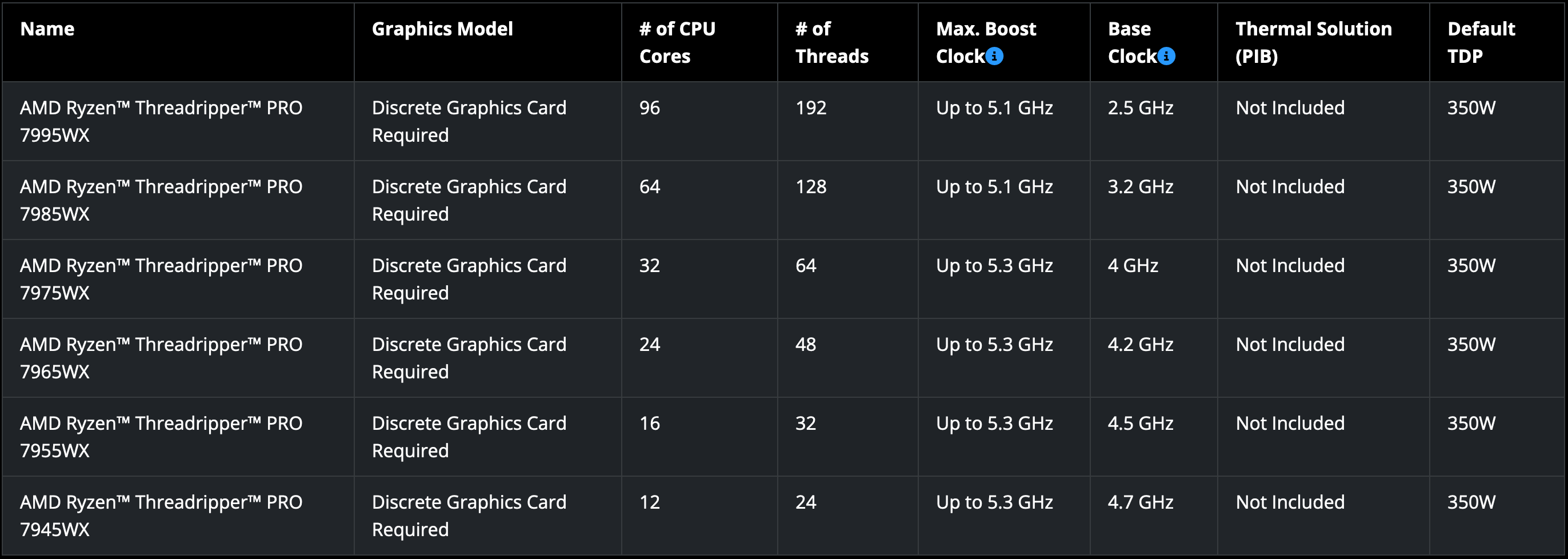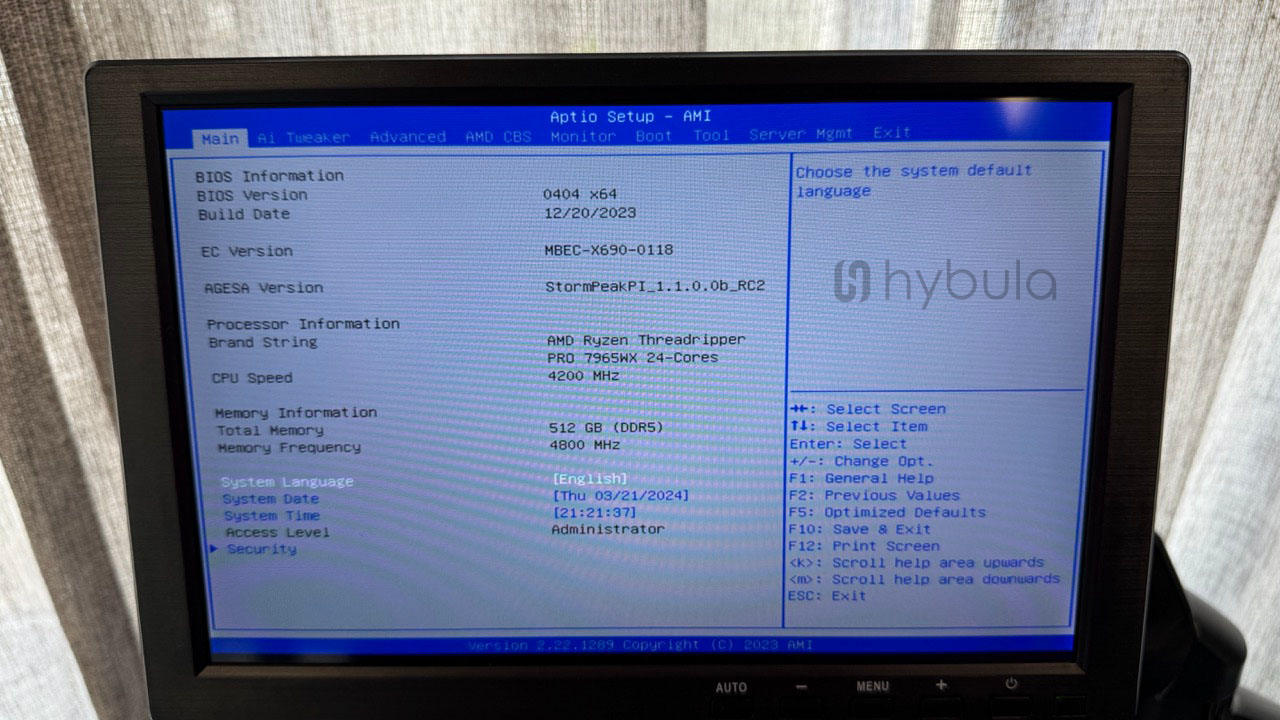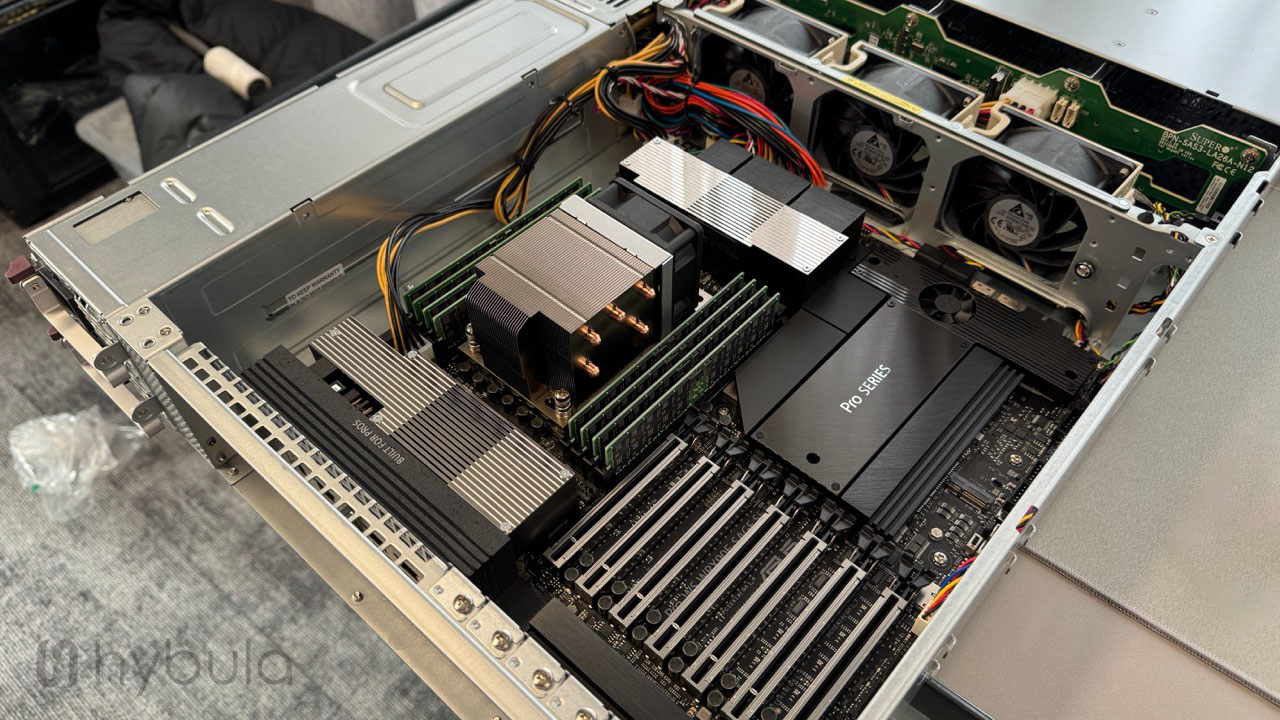Playing with AMD Threadripper
Innovation is an important pillar here at Hybula, working with the latest technologies and hardware is important for us to stay in the loop, and obviously, it's fun! This time we had the opportunity to play with an AMD Ryzen Threadripper 7965WX, read on to find out how we ended up here.
A few weeks ago a long-term customer reached out to us about a specific project that required high-performing CPU power. So intuitively we immediately thought about the latest AMD EPYC Genoa series processors, but this customer required even more!
We already have a lot of experience with the regular AMD Ryzen lineup (e.g. 7950X), they deliver a lot of performance while being quite efficient in terms of power use. The customer for this project, however, required more than 16 cores with at least a base clock of 4 GHz and a boost on all cores of at least 4.4 GHz under 100% load. A nice to have was to be able to boost above 5.0 GHz with 100% load on 4-8 cores. This means that AMD EPYC is not an option anymore and we are forced to look for workstation CPUs like the Xeon w9 or Ryzen Threadrippers.

Due to personal preference by us and the customer, we started to look for the Threadrippers. As you can see in the lineup below, there are several options ranging from 12 to 96 cores. Generally, the more cores you have, the lower the single-core performance will be under load. The requirement for this project was to have as many as cores possible with the highest single-core performance, so we chose the 7965WX.

When building new machines, we normally work with building blocks from Supermicro. Unfortunately, they only had one motherboard option H13SRA-TF that didn't meet our requirements (e.g. at least 8 DIMMs), plus the only compatible building blocks are based on 4U chassis, something which we didn't want at all. We noticed that any other server vendor didn't have sTR5 socket motherboards, so we had to look for workstation motherboards. We ended up with two options; the ASUS Pro WS WRX90E-SAGE SE and the ASRock WRX90 WS EVO. The ASUS one was easily available in Europe, while the ASRock one wasn't available at all.
We opted for 8x 64 GB DDR5 RDIMM from Samsung as these are the most interestingly priced. Combined with a Supermicro 2U chassis with U.2 slots, because we love to use the PM9A3 NVMes. After some burn-in testing and benching, we ended up with the following build below.

So in benchmarks, we noticed a max boost of 4.79 GHz on all cores with 100% load. Geekbench 6 single-core score of 3053 and multi-core of 24102, not bad right?
Are you looking for innovative and custom builds like this? Reach out to our sales for more info, but please note that this won't be cheap :)